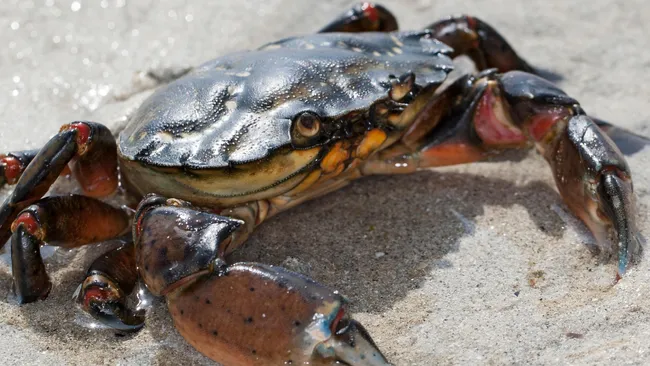Crabs are often cooked alive under the assumption that they cannot feel pain, given the lack of specific brain structures associated with pain processing. But is this belief accurate?
Research suggests it might not be. A recent study published in Biology highlights that shore crabs (Carcinus maenas) possess nociceptors—specialized nerve endings that detect bodily harm and transmit pain signals to the brain.
Scientists tested the responses of 20 crabs to various stimuli, including gentle pokes with a plastic tool and vinegar applied to sensitive areas like the eyes, antennae, and joints. These actions triggered measurable central nervous system responses consistent with nociceptive signaling. In contrast, non-harmful substances, such as seawater, elicited no such reactions.
Nociceptors, present in humans and many mammals, activate when an injury occurs, prompting the brain to recognize pain and initiate protective responses. However, the mere presence of nociceptors doesn’t definitively prove that crabs experience pain. According to Eleftherios Kasiouras, a biologist at the University of Gothenburg and study co-author, these receptors could merely trigger reflexive responses, such as pulling back from danger, rather than a conscious sensation of pain.
Yet, behavioral studies add weight to the argument. Research on hermit crabs has shown that they exhibit self-protective actions, such as abandoning their shells to escape electric shocks. Interestingly, these crabs are less likely to leave their shells if they detect predator scents, suggesting a conscious decision-making process rather than an automatic reflex.
The recent findings on shore crabs provide another piece of evidence, suggesting that they may indeed feel pain. This growing body of research has led scientists to advocate for more humane treatment of crustaceans, including banning the practice of boiling them alive—a step already taken in countries like Switzerland, Norway, and New Zealand.
Studies are also investigating whether other marine animals, such as squids, clams, and mussels, meet the criteria for pain perception. While these species have nociceptors and exhibit some pain-avoidance behaviors, their neurological systems are less understood compared to mammals.
As Kasiouras explained, “Human use of animals for food, research, and other purposes requires ethical considerations. If these creatures experience pain, it’s imperative to establish humane practices to minimize their suffering throughout their lives.”
